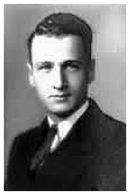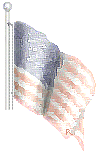COMBAT ART
John S. Gretzer, 23-year-old Council Bluffs artist, is now a combat artist for the U. S. coast guard. His work, sketches drawn while he took part in the invasion of North Africa, Sicily and Italy are shown on page 10.
BLUFFS’ COMBAT ARTIST
VIEWS MEDITERRANEAN INVASIONS
John S. Gretzer, a slender youth from Council Bluffs, was working in Kansas City, Mo., as an artist when he enlisted in the U. S. Coast Guard to see action.
He saw it!
During the 18 months service aboard a coast guard-manned combat transport he participated in the invasion of North Africa, Sicily and Italy.
Now this 23-year-old son of Mrs. Grace D. Gretzer, 804 East Pierce street, is back in the United States finishing sketches he made while abroad.
Now in Washington.
The coast guard last week released the accompanying pictures from Combat Artist Gretzer, now stationed at Washington, D. C. His wife, the former Agneta E. Jensen of Omaha, whom he first met in a sculpture class at the University of Omaha, has just returned from a visit with her husband.
“John arrived back in the States about Thanksgiving. He will now be stationed in Washington for some time, finishing up his black and white sketches, and then doing some work in oils,” she said.
She plans to leave this week to join her husband.
And speaking of invasions, Gretzer obtained some very definite ideas about them.
“Bombers for breakfast, bombers for supper, bombers all the time. You couldn’t even sit down to eat without feeling that in a couple of minutes you were going to have to run for the guns,” he said, recalling the North African invasion.
A Naked Feeling.
“At night the German bombers dropped flares. It’s twice as bad at night – in the daytime you can see what’s going on around you. At night you feel as if the dark hides you, then a flare drops and you have that horrible feeling of being naked in public.”
Gretzer’s combat station in the coast guard is on the trigger end of a 20 mm gun.
“Algiers was my first invasion and it made the greatest impression on my mind. After that invasions were somewhat the same. The incidents were different, however.
“I remember the German plane that came in so low at Gela that I could see the pilot, and seeing his plane get hit the second time he tried it. All I could think of was the speed of being smashed to death, though the words didn’t come to me until later.”
Salerno Hard On Men.
“I think I was most nervous at Salerna when we were leaving. We had to go through a narrow channel in a mine filed, single file, and I kept thinking that if the lead ship was sunk the rest of us would be blockaded and the Germans could bump us off like drowsy ducks.
“Actually, however, North Africa was the hardest on the ships and Salerno the hardes on the soldiers, judging from what I saw,” Gretzer declared.
Gretzer was born in Council Bluffs, and was graduated from Abraham Lincoln high school in 1938.
“He was one of the outstanding creative artists at the school,” Principal Gerald Kirn said. “He was a student of etching and dry point under R. M. Hammes.”
A dry-point print, “Age Defeated,” was selected from among the work of some 12,000 other high school students in 1937 for exhibition in the fine arts galleries at Carnegie institute, Philadelphia.
At various times he attended the University of Omaha, and worked as an advertising artist for an Omaha newspaper. He attended the Kansas City Art Institute, where Thomas Hart Benton was among his instructors.
Some Benton Fire.
His work, critics say, reflect some of Benton’s teachings, and at least one story reflects some of the mental fire of his instructor.
Gretzer was commissioned to do the murals at the Iowa building of the Centennial here at Dodge part. Suggestion was made, while he was still working on the project, for some “toning down.”
“Perhaps Iowa did have some rather raw history,” Gretzer said. “but its my job to tell the story accurately. Either that, or they get another artist. I am not going to portray the state’s history in any other way than I see it.”
The mural stood as Gretzer painted it.
In 1942, while a member of the coast guard, Gretzer won second place in oils at the annual six-state exhibition at the Joslyn Memorial, Omaha. His work has been exhibited there on several occasions, as well at the Kansas City gallery.
Source: The Council Bluffs Nonpareil, Council Bluffs, Iowa, Sunday, January 09, 1944, Pages 1 & 10
![]()

